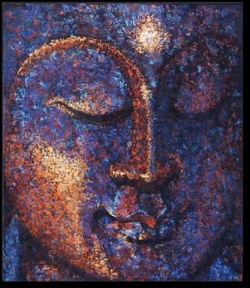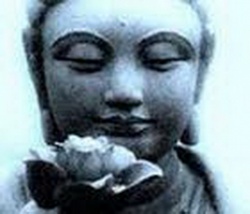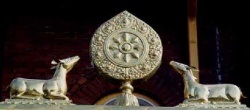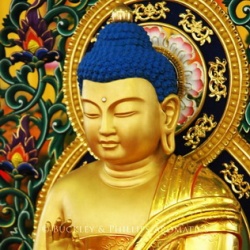Manual of Abhidharma - Reading One: Introduction to Abhidharma
The first selection is from the Schools of Philosophy, written by Changkya Rolpay Dorje (1717-1786).
Here next are the Buddhist schools. They are the Detailists, the Sutrists, the Mind-Only School, and those of the Middle Way. The number of these schools is exactly four, no more or less, and this is proven by numerous statements from both the secret and the open scriptures. In particular, in proof of this number there is the following quotation from the Commentary by Diamond Heart:
Those of the Buddha are four; the Able One
Had no intention of a fifth.
Master Aryadeva has said as well:
Those who assert that the teachings of the Buddha Consist of four schools have seen the way it is: These, for those who hope to practice, are precisely The paths explained by the Detailists and the rest.
On the question of an evolution of these four schools, some people assert that the Detailist and Sutrist Schools started after the third council for assembling the scriptures. They say that the Middle-Way School began during the days of Master Nagarjuna, and that the Mind-Only started in the time of Arya Asanga. They also believe that, prior to these points in time, there was no concept of the four schools.
This idea is however incorrect, for we do see the concept of the four schools in works such as Ocean of the Angels; the Secret Teaching of Lo Diamond, in Two Parts; the Secret Teaching of the Wheel of Time; the Secret Teaching of Diamond Arali; and others as well.
The verses throughout the commentary below are from the Treasure House of Knowledge, written by the Master Vasubandhu (350 AD). The commentary to this and the verses below is from Illumination of the Path to Freedom, written by Gyalwa Gendun Drup, His Holiness the First Dalai Lama (1391-1474).
Now the Treasure House of Knowledge utilizes eight chapters as a means of expressing its subject matter of five basic types. Our explanation of the work has four divisions: an explanation of its title, the translator’s obeisance, an explanation of the body of the text, and an explanation of the conclusion. In explaining the title we will first translate it, then elucidate its meaning. 2 About the Title
In Sanskrit, the Abhidharmakosha Karika.
In Tibetan, the Chu Ngunpay Dzu Kyi Tsikleur Jepa.
[In English, The Treasure House of Knowledge, set in verse.]
In Sanskrit, the title of this work is the Abhidharmakosha Karika. In Tibetan, this translates as Chu Ngunpay Dzu Kyi Tsikleur Jepa [or, in English, The Treasure House of Knowledge, set in verse.] Abhidharma refers to “knowledge,” kosha to “treasure house,” and karika to “set in verse.”
Now why do we bother mentioning the Sanskrit title of this commentary to the Buddha’s words? We want to indicate that the work is of reputable origin. Buddhas of all three times, whether past or present or future, attain their enlightenment at the Seat of the Diamond, in India. So the Indian name is meant to show an origin in the seat of knowledge, India.
A commentary is worth no more or less than it is, but if people think it comes from India they’ll take the time to study and teach it, just because of the better source. It’s just like the local merchants. If they hear some barley has come from the lowlands, right away they want to trade for it, because the source is a good one.
A commentary may actually be excellent, but if you don’t put some Sanskrit in it nobody wants to work with it. They think it’s just Tibetan. Like local merchants who heard that some barley came from a highlands nook—nobody wants to touch it, whether it’s really good or bad.
Mentioning the title in Sanskrit has the further purpose of starting a mental propensity for this excellent tongue. All Buddhas of the three times teach the Dharma in Sanskrit after their enlightenment. An acquaintance with just this small amount of the language acts as a mental seed, which will ripen into a nearly automatic fluency. Finally, it helps one comprehend the differences in word order between Tibetan and Sanskrit.
Why do we mention the title at the very start? It facilitates locating the proper volume, and understanding its subject at a glance. Why put the Sanskrit and Tibetan side by side? So we may recall the kindness of the master translators, and strive to repay our debt to them. We’ll explain the actual import of the title later on; here first comes the obeisance of the translator.
We now turn to the second part of our detailed treatment of the text’s subject matter: an explication of caused phenomena. In this regard we examine the actual content of the text only after discussing its structure in three divisions: a listing of the eight chapters, a demonstration of their interrelation, and a description of the subject matter presented in each of the eight.
Master Purnavardhana presents the eight chapters of the Treasure House as follows:
Eight chapters were written to elucidate in detail what is indicated only briefly by the opening words of the texts: “All phenomena, stained or without stain.” the first two of the chapters are devoted to a general treatment of stained and unstained phenomena. A detailed presentation of stained phenomena is left to the next three chapters. The third, for example, relates (1) who it is that is so very afflicted, (2) where they live so very afflicted, and (3) how they are so very afflicted. It does so with respective presentations on (1) the five types of beings in the three realms—the world of living beings; (2) the external world—the “vessel” which holds these beings, and (3) the four modes of birth and twelve links of dependent origination. The fourth and fifth chapters describe what it is that makes beings so very afflicted—stained deeds and the mental afflictions.
The final three chapters give a detailed treatment of unstained phenomena. Chapter Six covers who it is, what kind of person, that is purified; where it is, the place, that he is purified; and how it is, by what stages of realization, that he is purified. Chapter Seven concerns what it is that makes the person pure: as sutra says, “Affliction is something wisdom must destroy.” Chapter Eight concerns meditation—that which provides a base for wisdom to rely on—for as sutra states again, “The mind in meditation gleans pure reality.”
Other masters of the past have outlined the eight in the following way:
The work is presented in eight chapters in order to address three points: objects, activity, and result. In general, all objects may be divided into two types: apparent reality and actual reality. The first two chapters are devoted to apparent reality; the third, fourth, and fifth deal with actual reality—the four truths. The sixth chapter explains the different types of realization, whose sphere of activity is actual reality. The result which is attained, wisdom, as well as other personal attributes associated with it are treated in the final two chapters.
As for the interrelation of these chapters, the first presents the general subject matter addressed by the works on knowledge: stained and unstained phenomena. The first chapter makes but a mere mention of the powers and of the way in which caused phenomena arise; thus the following chapter, the second, is devoted to a more detailed treatment of these two points. The subject of the three realms, given only passing mention in these opening chapters, is therefore explored in the third. Some believe that the three realms thus presented are creations of some god, such as the one they call “Powerful”; the following, fourth chapter therefore disproves this idea and shows that the real source is deeds.
The message of the next chapter, the fifth, is that the motivating force behind the deeds outlined in Chapter Four is the widespread mental afflictions. The sixth chapter is devoted to demonstrating a path by which we may eliminate these afflictions, so naturally comes after their presentation. The seventh chapter provides additional detail about the types of knowledge mentioned in the sixth; the eighth, lastly, completes the interrelationship of the chapters by enlarging upon the qualities which the Buddha possesses in common with advanced beings at lower stages—these qualities and those unique to the Buddha having first appeared in Chapter Seven.
The third point we have promised, a description of the subject matter presented in each of the eight chapters, will be understood from the words of the Master’s work itself.
Having thus covered the pledge to compose the work with its preliminary eulogy, we shall present the actual explanation of the work’s title, the first subject treated once the author has inspired himself for the work. The word “knowledge” will be explained first, both by itself and, incidentally, with regard to its accessories. Then we will speak of the expression “treasure house.”
Knowledge and its Real Accessories
Knowledge is unstained wisdom, and its accessories.
[I.5]
Master Vasubandhu has promised “To write this commentary, the Treasure House of Knowledge.” But what does he mean by “knowledge”? There are two types of such knowledge; we may describe the first in the form of a logical statement:
Consider the following three paths without stain: those of seeing, habituation, and no further learning. They are actual knowledge, because They constitute unstained wisdom and its accessories.
Now the second portion of knowledge, its accessories, may further be addressed in two divisions of real accessories to knowledge and merely nominal accessories to knowledge. Real accessories to knowledge may be considered in terms of the level upon which they rely, the meaning of reliance in the present context, and an investigation into how many heaps knowledge has, if you also count all which stand in attendance to it.
On what levels do the three mentioned paths rely? The path of seeing may rely on any of the six levels of concentration. This is because the final stage of the path of preparation, known as “ultimate phenomenon,” may itself rely upon any of these six levels; and the path of seeing always relies upon the same level as the stage of the ultimate phenomenon. As the scripture states, “Same level as ultimate phenomenon.” Scripture also confirms our assertion that the ultimate-phenomenon stage can rely on any of the six levels: Meditative at beyond no leisure, Extraordinary concentration level too.
The ultimate-phenomenon stage of the path of preparation does not, however, rely on preliminary levels other than the one mentioned. The stage beyond no leisure is free of stain, whereas the remaining stages are stained—they are levels wherein one’s state of realization derives only from making distinctions between more or less subtle levels of experience. Nor can the ultimate stage of the path of preparation ever rely on the desire level, for the stage is one of controlled meditation, and the desire level is not.
Neither can the ultimate stage rely upon any one of the first three formless levels, for at these levels one is incapable of focusing upon the desire level—and during the path of seeing one must. Finally, it is impossible for the ultimate stage to rely on the “peak” level—the fourth of the formless levels—for one’s ability to discriminate at this level is too unclear.
The unstained path of habituation, as well as that of no further learning, may both rely on any one of the nine unstained levels.
Now what we mean by “reliance” in the above discussion is not the kind of reliance you might imagine, where the pole of a banner is propped up in one of those chimney-like tubes in the corner of the roof to a Tibetan house. Rather the path, or mental realization, actually consists of the particular level it relies upon.
How many heaps does knowledge have, if you count all of those which are attendant to it? Knowledge can be said to have all five heaps, since unstained wisdom comes along with non-communicating form included within unstained restraint. Feeling is present as pleasure of thought if the wisdom relies on the first two concentration levels. Where it relies on the third, mental pleasure is had. Reliance on other levels, of neutral feeling, means that neutral feeling is present. Discrimination is there as an attendant to consciousness of one’s thoughts, as well as the heap of other factors—be they mental functions or the factors not associated with mind—along with consciousness.
Someone may object that it is improper to speak of consciousness of one’s thoughts as being “attendant” to unstained wisdom, since mind itself must be considered more primary than mental functions. Generally the relationship is so, but in the context of an ultimate analysis of phenomena wisdom must be treated as the more primary. If the context had been the subject of belief, for example, we could even have considered faith more principal.
With regard to the formless realm, no accessory to knowledge possessing form would be present, and thus only four of the heaps had in attendance.
6 Nominal Accessories to Knowledge
Those used to achieve it, and the commentaries.
[I.6]
There are a number of accessories to knowledge which are merely nominal. Those include first the wisdoms of learning, contemplation, and meditation, which are practiced in order “to achieve it”—actual knowledge. Second there is that amount of wisdom with which one is born. Finally there are the classical commentaries which take these very types of wisdom as their subject matter. These include The Practice of Wisdom and similar works.
Let us use the form of a logical statement: Consider the accessories to knowledge just mentioned. They may be given the name “knowledge,” because They constitute the means or cause of one’s achieving actual knowledge.
What is the actual process of causation here? Untainted wisdom springs from meditative wisdom, which comes from contemplative wisdom, which derives from the wisdom of learning—all dependent upon the wisdom with which one was born.
Calling these accessories “knowledge” serves a specific purpose: the author is trying to tell us that they must be relied upon as methods, or causes, for achieving real knowledge. In actual point of fact they could never be knowledge, since they are stained.
At what level can each of the three accessories mentioned be found? The wisdom with which one is born exists in all three realms.
Wisdom derived from learning is found in the lower two realms but never in the formless, since there is no hearing sound in that realm. Contemplative wisdom exists in the desire but not in the higher two realms, since there the mere act of starting to turn the mind towards an object sets off one-pointed concentration. Meditative wisdom, on the other hand, appears only in these higher realms and never in the desire, since it is not a level where there exists any controlled meditation.
The classical commentaries, if we consider them as the actual sound of speech, exist only in the desire realm and are absent from the higher two: as the Treasure House itself reads, “Communicating at those with examining.” If on the other hand we consider these commentaries as names, words, and letters, they can be said to exist in the lower two realms but not in the formless: again the Treasure House states, “Included in the desire, form; animate.”
Meditative wisdom of the form realm, insofar as it possesses the noncommunicating form of restraint arising from concentration, involves all five heaps.
Where does the word “knowledge” (Sanskrit: abhidharma] come from? A phenomenon (dharma) is that which possesses [dhr¸] a nature. And knowledge brings to (abhi) you, or leads you to (abhi) that highest of all existing phenomena: nirvana.
7 About the Expression “Treasure House”
“Treasure house” of knowledge because they all fit here In its points, or since they are its home. [I.7-8] Master Vasubandhu has stated: “I shall write this commentary, The Treasure House of Knowledge.” Just how is it a treasure house of knowledge? The very most prized points of the Seven Works on Knowledge all fit here in the points, in the subject matter, of the Master’s commentary. The scabbard in which you sheathe a sword, for example, is called the “scabbard of the sword,” and the place where you deposit your riches is termed the “treasure house of riches.”
You could also say that the Seven works on Knowledge are themselves the “treasure house,” and that they are the home, or source, for the present work. The expression “scabbard of the sword,” for example, can just as well indicate the place from where the sword was drawn.
Next comes a demonstration that the teachings on knowledge are the word of the Teacher, preceded by a statement of purpose.
8 Purpose and a Proof
'There’s no way to put the mental afflictions to rest without an
Ultimate analysis of every existing phenomenon, and this
Affliction is what keeps the world adrift here in the ocean of
Life. Thus the Teacher has spoken it, they say.
[I.9-12]
Giving an explanation of knowledge has the following purpose. Without wisdom which analyzes every phenomenon in an ultimate way, there is no way of putting to rest all that the mental afflictions imply. And this affliction is what keeps those of the world adrift here in the ocean of life. It is therefore necessary to plant, in students’ minds, wisdom which can make this ultimate analysis of phenomena. Thus the explanation.
The Master, moreover, has good reason to honor the exposition of knowledge. He knows that, first, it plants the wisdom of ultimate analysis in the minds of students. Secondly, it has been spoken by the Teacher.
“Why do you say that the exposition of knowledge is spoken by the Teacher?” one may object. “Are you trying to say that the Seven Works on Knowledge were not composed by the enemy destroyers?” In answer, we may say that
they are the speech of the Teacher. Even the great enemy destroyers would have been unable to make the first descriptions of the nature and then divisions of existing phenomena had they not relied upon the Buddha.
The Buddha first delivered various teachings, according to the states of mind or inquiries of his disciples. The scattered records of these teachings were later taken by the Venerable Katyayaniputra and others, and collected into such works as The Practice of Wisdom. The Venerable Dharmatrata, for example, has taken a whole group of scattered sutras, delivered at various places and times, addressing the needs of various students with counsel such as “Alas! All things with causes must change!” He has arranged these various teachings into a group, but they remain the word of the Teacher. So too with the Seven.
The entire point may be summarized in an extended logical statement: The works on knowledge are nothing less than the word of the Teacher, because The enemy destroyers have only made them into collections, Analogous to the sections of sutra and vowed morality found in the canon, for They are only collections made by the Arya Kashyapa. Thus they say.
This expression, “Thus they say,” is meant to indicate that another school of philosophers holds a different view. The so-called “Sutrists” assert the following:
That these explanations constitute the speech of the Teacher is a belief held by the followers of the “Knowledge” group within the Detailist school of philosophy. We however cannot accept this tenet, for many statements appear in these texts which are contrary to logic. One example is the claim that phenomena not produced by causes exist as material entities. Moreover, everybody knows there are lots of other authors who have composed such works on knowledge. They are the works of enemy destroyers, not collections of the Buddha’s speech.
Now Master Jinaputra’s text, in a versed summary, lists the Seven Works on Knowledge as follows: Katyayaniputra did Practice of Wisdom, The Treatise was of Vasumitra.
Collection of Consciousness, Devasharma, And Shariputra the Heap of Phenomena. The Comment on Wisdom’s by Maudgalyayana, Mahakaushtila’s Types of Beings; And Purna, Category Anthology.
Master Purnavardhana attributes the Types of Beings to Shariputra. “Why is the one school,” you may ask, “known as the `Sutrists.’?” This school of philosophers holds that sutra is valid, but denies the validity of classical commentaries such as the Seven Works on Knowledge. The Detailists respond with the following criticism:
Well then, what about the expression “monk who has mastered all three sections of the scriptures,” which occurs in sutra itself? How are you going to come up with three sections of scripture? We don’t see any section on knowledge apart from these very works.
The Sutrists counter:
This is not a problem. Those works within the sutra section devoted to the delineation of what is ultimately real and to the defining characteristics of phenomena constitute in themselves a discrete section on knowledge. So they say.
“Now why is the other school,” one might continue, “known as the `Detailists’?” One may say that they are “Detailists” because they devote their study exclusively to the classical commentary known as Detailed Exposition, or else because they understand the Exposition’s meaning. The school itself may be further divided into a number of groups. Those who reside in Kashmir are known as the “Kashmiris,” while those who live in the western part of the same land are known as the “Westerners.” Detailists in areas other than Kashmir, those in central India and so forth, are referred to collectively as those “Under the Sun.”
Now the lines beginning with “There’s no way to put the mental afflictions to rest…” also indicate that Master Vasubandhu’s commentary possesses the four requisite attributes of a reputable work. Again we may use the form of a logical statement:
Consider the act of making a statement of purpose, and of a relation of the text to that purpose, here at the beginning of the commentary.
It has a purpose of its own, because It conveys to disciples the fact that the commentary possesses the four attributes of a reputable work. Once they realize that these attributes are present, disciples will be inspired to study the text. Here are the four attributes:
1) The subject matter of the text concerns stained and unstained types of phenomena. It is indicated in the verse with the words “every existing phenomenon.”
2) The purpose is to utilize this subject matter to plant, in students’ minds, that wisdom which analyzes phenomena in an ultimate way. It is indicated by the words “ultimate analysis.”
3) The ultimate goal is to have these students achieve nirvana, both with and without anything remaining. It is indicated indirectly by the entire phrase running from “There’s no way…” up to “…without,” and on from “this affliction…” up to the word “Thus.”
4) A relation exists in that the purpose must be achieved through the subject matter of the work, and the ultimate goal through this very purpose.
One may also state the relation as being between the subject matter of the work (that is, all existing phenomena) and the means by which this subject matter is expressed (i.e., the commentary itself).
Demonstrating that the work possesses the four attributes serves its own purpose. Master Dharmottara explains that
It functions to satisfy any doubts that a student might have about whether the commentary has any purpose; if so, whether one could ever achieve that purpose; if so, whether anyone would want to; and, if so, whether there exists any relationship between the text and the realization of its proclaimed purpose.
Master Vinitadeva is in no disagreement:
A statement of just these four attributes serves to allay any suspicions a person might have that the work might lack any subject matter, or be without a purpose, or lead to no desirable ultimate goal, or that these three might bear no relation to each other. The statement thus inspires students to take up the commentary.
Someone may make the following objection:
If the mere claims that the work possesses these attributes is enough to remove any doubts that it does not, then the simple statement “Sound is a changing thing” should be enough to remove any misconception that sound is lasting. If the latter is true, it must be an exercise in futility for the classic proofs to go on and give a reason followed by a supporting example, to prove the point of sound’s impermanence.
And suppose the statement about sound is not enough to stop the misconception by itself. How then can the assertion about the attributes suffice to end a student’s doubts? For the two cases are exactly the same.
Sages reply to such an objection as follows: Telling someone that sound is changing is enough to prevent his believing that sound is something lasting. Giving him then a reason and supporting example serves to plant the opposing, accurate belief in his mind, removing the uncertainty and lack of correct ideas left behind by stopping his wrong belief.
One may ask if any of the four attributes is such that one subsumes another. The purpose, its ultimate purpose, and the relationship of the content to the purpose are, all of them, subsumed by the subject matter—for this subject matter includes every existing phenomenon. Neither of the purpose of its ultimate purpose subsumes the other, since they are cause and effect.
Yet another question may be raised:
You’ve mentioned that the ultimate goal of knowledge is achieving the two types of nirvana. Can you list each one’s basic nature, as well as characteristic features?”
According to the Listener system, nirvana where something still remains is described as having both achieved and actualized a cessation resulting from analysis, an elimination of the true condition of the source of all suffering, which implies deeds and mental afflictions. At the same time, one has achieved but not actualized a cessation where he has eliminated suffering. Something “remains” because one still undergoes some one or more of the three types of suffering.
We can see occurrences in sutra of persons who had attained this nirvana, who were living in desire-realm bodies and still had to go through outright suffering. Arya Gurchung, for example, was forced to consume a soup of water and ashes, which killed him. The Arya Udayin was decapitated in a brothel. We hear of a self-made Buddha who died from a wound inflicted by a poisoned arrow. Even the Buddha himself was pricked by the sandalwood thorn, suffered from backache, and bled where he was hit from the fragments of shells hurled by Devadatta’s catapult.
Enemy destroyers reside in all three realms; those at the first three levels of concentration have but the last two kinds of suffering left: the first is completely absent there. Those at the fourth concentration level and beyond have only the last suffering, the pervasive kind of mortality itself, remaining still.
Given the above, we can say that one achieves nirvana without anything left over when he actually brings about a cessation in which every one of the stained heaps has been stopped. The Anthology of Advices concurs:
The body dissolves, feeling’s finally cooled,
End of discrimination, demise of the other
Factors—consciousness fades away.
Such one has seen the end of suffering.
It should be noted that the above view is only that of the present school. According to the great vehicle, the freedom achieved by listeners and self-made victors is not a final sort of freedom. Moreover, the prick of His foot by the sandalwood thorn and the other events mentioned above were only a show that the Buddha put on for the sake of His disciples. Actually the Buddha is completely incapable of suffering, for He has liberated himself from every possible problem, ranging from those of a normal suffering life up to those of a lower nirvana. The sutra known as Developing the Three Bodies of a Buddha does though speak of the two form bodies of the Buddha as being nirvana with something remaining, and of the phenomena body as being a nirvana with nothing remaining.
Master Jinaputra summarizes as follows: The whole purpose of explicating knowledge is to make one a master of subjects such as the heaps and so on. Two benefits spring from such mastery. One’s own focus helps him to develop such qualities as mental quietude. And when discoursing with others, he will feel full confidence to expound on any question.
See also
- Manual of Abhidharma - Reading One: Introduction to Abhidharma
- Manual of Abhidharma - Reading Two: The Nature of Karma, and What it Produces; the Detailist Concept of ''Non-Communicating Form''
- Manual of Abhidharma - Reading Three: Types of Deeds, and the Nature of Motivation
- Manual of Abhidharma - Reading Four: The Correlation of Deeds and Their Results
- Manual of Abhidharma - Reading Five: How Karma is Carried, According to the Mind- Only School
- Manual of Abhidharma - Reading Six: How Emptiness Allows Karma to Work, According to the Middle-Way School
- Manual of Abhidharma - Reading Seven: Black and White Deeds, the “Path of Action,” and the Root and Branch Non-Virtues
- Manual of Abhidharma - Reading Eight: Most Basic Virtue, and the Projecting and Finishing Energy of Deeds
- Manual of Abhidharma - Reading Nine: The Five Immediate Misdeeds, and the Concept of a Schism
- Manual of Abhidharma - Reading Ten: The Relative Severity of Deeds and What Causes It
- Manual of Abhidharma - Additions Part 1
- Manual of Abhidharma - Additions Part 2







